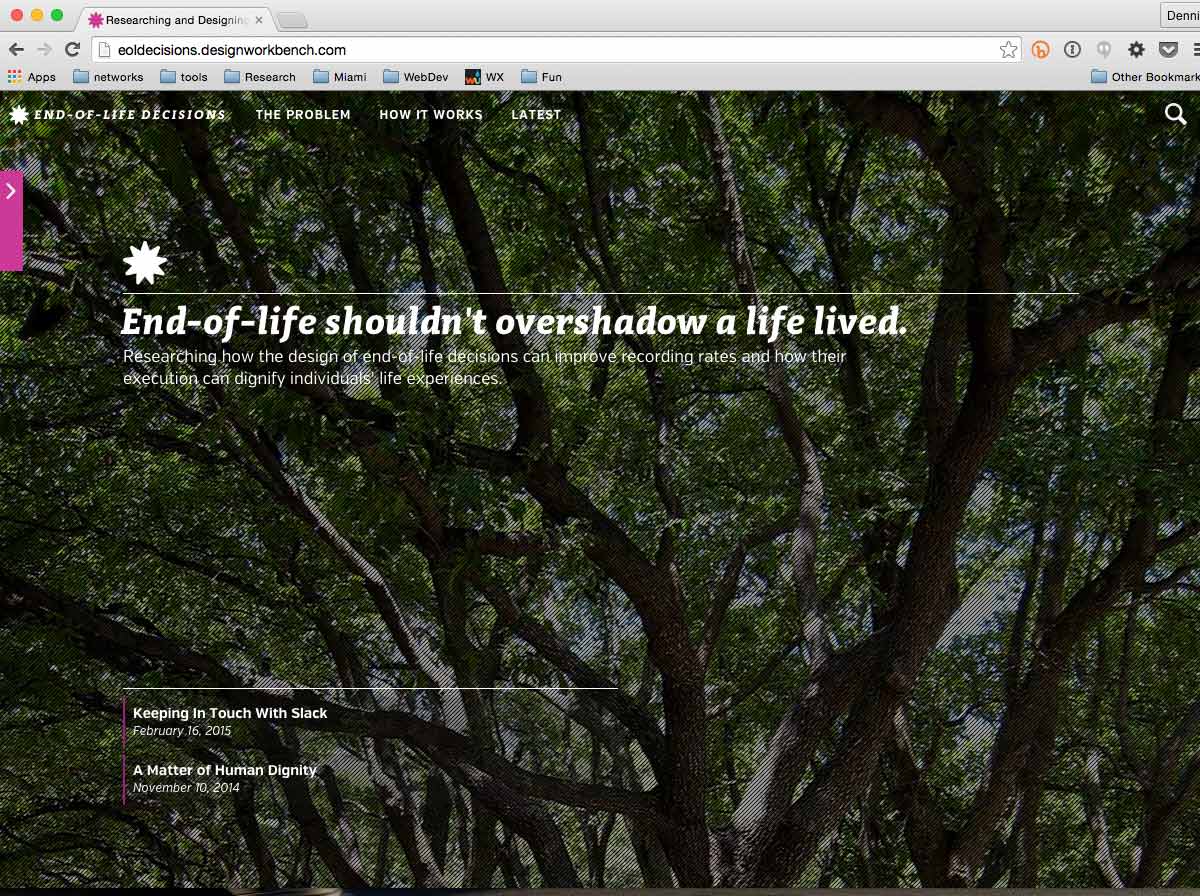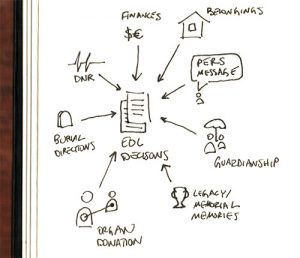Design Research: Decisions Related to End-of-Life Issues
Testing the power of design through studying decisions related to end-of-life issues.

I believe design can make an impact on some really huge issues in society. Call me an optimist, call me an Earthian (props to Buckminster Fuller), call me a dreamer, but I think design can affect positive change.
But I’m not content to be a believer… I want to be a prover.

That’s why I have been leading a team of researchers who have been taking a design research approach to study decisions related to end-of-life issues. Since December 2014, our research team has been growing and conducting key informant interviews, performing a review of existing literature, and connecting with other researchers who have been working in this domain. All of this work has laid the groundwork for the procurement of funding that will allow us to engage people in the Columbus and Cincinnati, Ohio areas so we may gain some insights into why a majority of Americans (70% according to some studies) do not take time to record their end-of-life decisions. Currently, our project is focused on studying underserved populations in these areas, and we are excited to get to know these people.

When I talk about the project, I get strange looks from folks wondering why designers would be addressing this issue. I don’t blame them! But when we consider how designed healthcare services are (do-not-resuscitate order paperwork, healthcare service procedures to obtain care, the architectural design of care centers, commercials and messaging meant to inform patients… the list goes on) it’s no wonder that designers and other researchers studying human-made outcomes are ideal for such a study.
Through participatory design, we hope to engage participants in designing their own, preferred ways to discuss their personal decisions regarding the end of their lives. End-of-life decisions are personal—with complex emotional and perceived factors playing significant parts in decision-making. My hope is that participants and the outcomes they inform will help reduce families’ and loved ones’ fear and uncertainty when end-of-life decisions must be activated.
Of course, I also hope that we’ll come away with more proof that people-driven design can make a difference for the people whom it serves.
You can keep up with the project as it progresses at the research website: End-of-life Decisions website.
YOU ARE MAKING FUN OF MY MOM! >:(